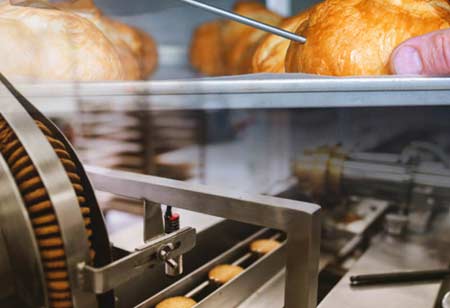Thank you for Subscribing to Food Business Review Weekly Brief
- Home
- Topics
- Alternative Proteins and Plant Based Food
- Beer and Wine
- Canned Beverages
- Coffee And Tea
- Food and Beverage Consulting
- Food and Beverage Financial Service
- Food And Beverages Marketing
- Food Distributors
- Food Ingredients
- Food Sustainability
- Plant Based Food and Beverages
- Seafood Suppliers
- Supplement Manufacturing
- Wine Investment
- News
- Vendor Viewpoint
- CXO Insights
- Conferences
- Newsletter
- CXO Awards
-
How can IoT improve food packaging for food enterprises?
The foodservice industry is a well-developed part where IoT can make real value for the enterprises that deliver, distribute, and sell the products.

By
Food Business Review | Friday, February 18, 2022
Stay ahead of the industry with exclusive feature stories on the top companies, expert insights and the latest news delivered straight to your inbox. Subscribe today.

Most enterprises have started to adopt IoT and other new technologies, whereas the food and beverage sector has remained somewhat aloof to utilising recent advances.
FREMONT, CA: The foodservice industry is a well-developed part where IoT can make real value for the enterprises that deliver, distribute, and sell the products. Undoubtedly, the food and beverage industry can work with its maximum potential by adopting IoT. IoT helps companies gain higher food safety standards, enhance traceability, reduce waste, and decrease expenditure at various food processing and packaging stages.
One of the food and beverage industry's main aims is to offer the end consumer the highest possible quality of food, which can depend directly on food storage before entering the consumer's basket. Balancing adequate temperature and humidity levels is also one of the significant concerns about handling sensitive food products such as meat or dairy. Any compromise in food storage can significantly impact efficiency, resulting in severe losses due to the failed and expired inventory.
After the Food Safety Modernization Act (FSMA) was implemented in the United States, it acted as a catalyst for a broader change in the food and beverage industry worldwide. The innovations help to focus on food safety through mitigation rather than responding to an issue of food contamination after it has occurred. Therefore, the food and beverage solutions enabled by IoT lend a hand to the companies to remain flexible and still adhere to the FSMA regulations.
Also, food and beverage logistics will use the IoT technology in their activities, such as monitoring the inventory in real-time and helping to automate replacement shipments. The industry can easily control the workings of the distribution chain, for example, by implementing RFID transmitters or GPS systems. It helps companies know consumer desires and meet market needs better without waste.
The RFID tracking technology also receives exceptional transparency and benefits from the food supply chain by automating the delivery and the shipping processes that track and control the storage temperature. It also helps shippers monitor the product's position with GPS and collect valuable data based on the relative performance in various regions.






